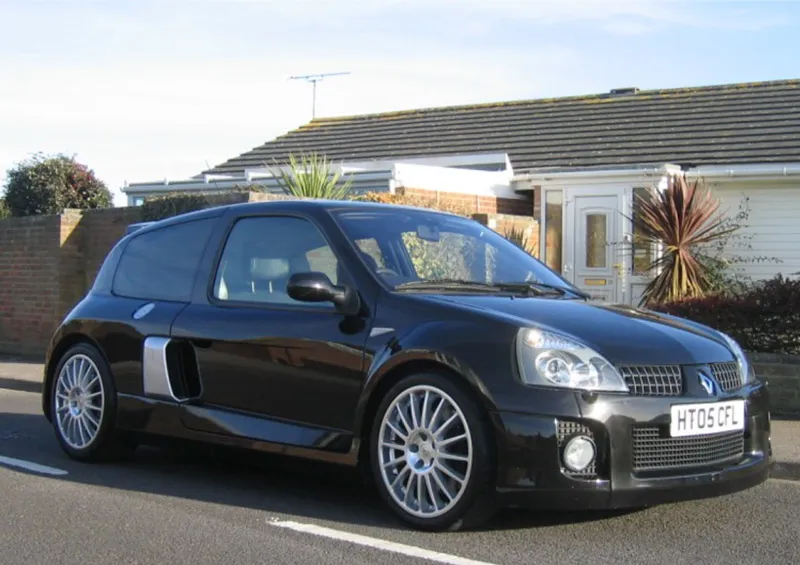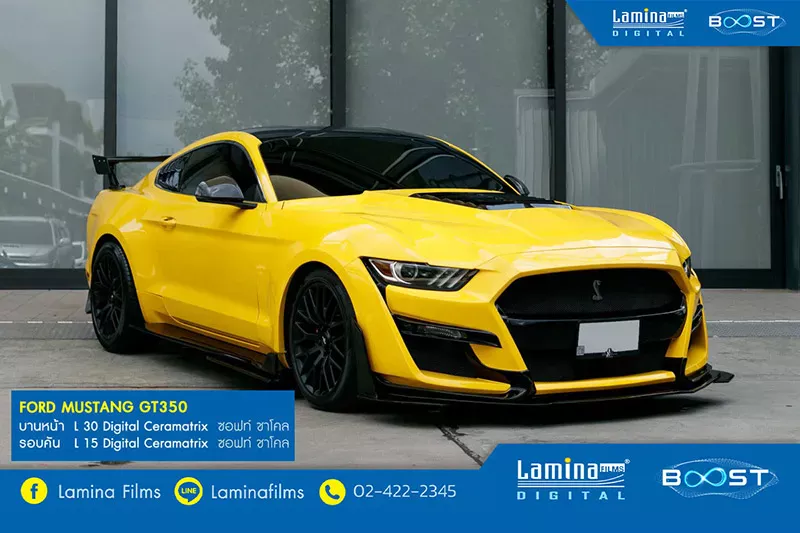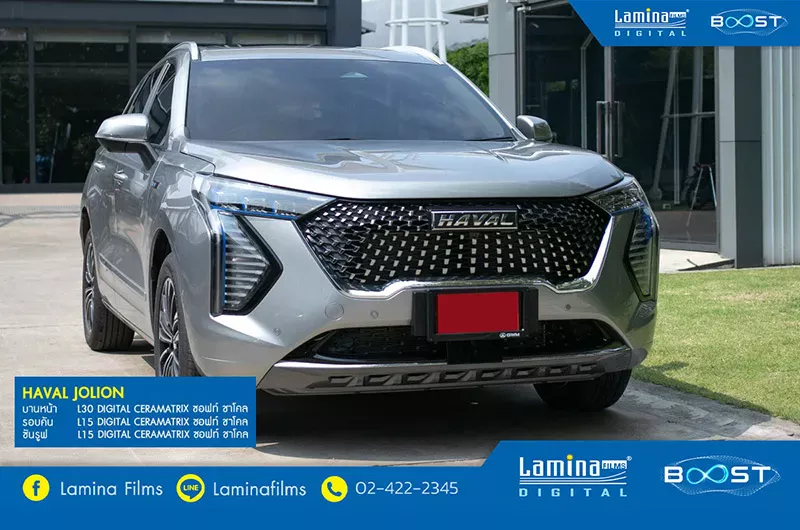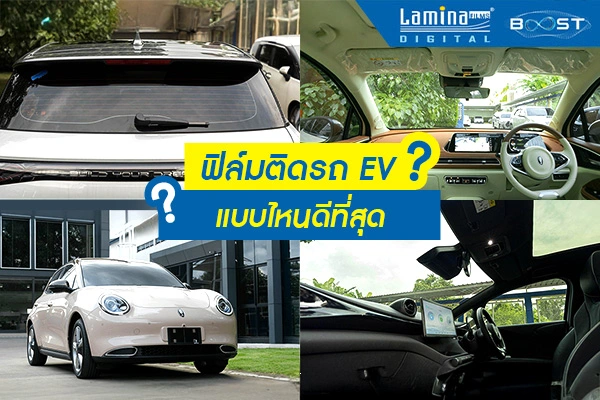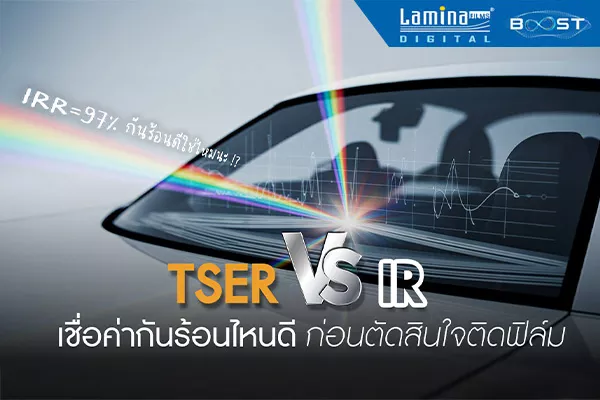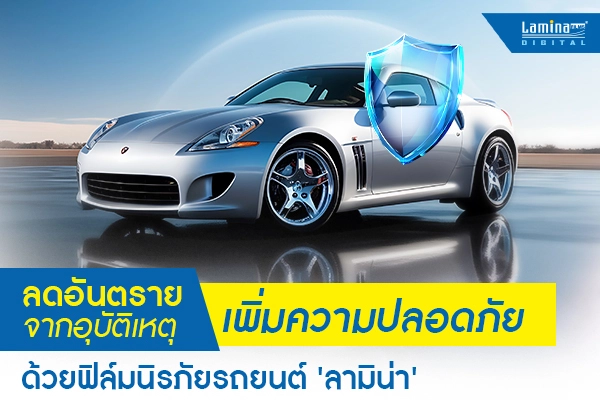How much tint darkness is right for you?
SHARE
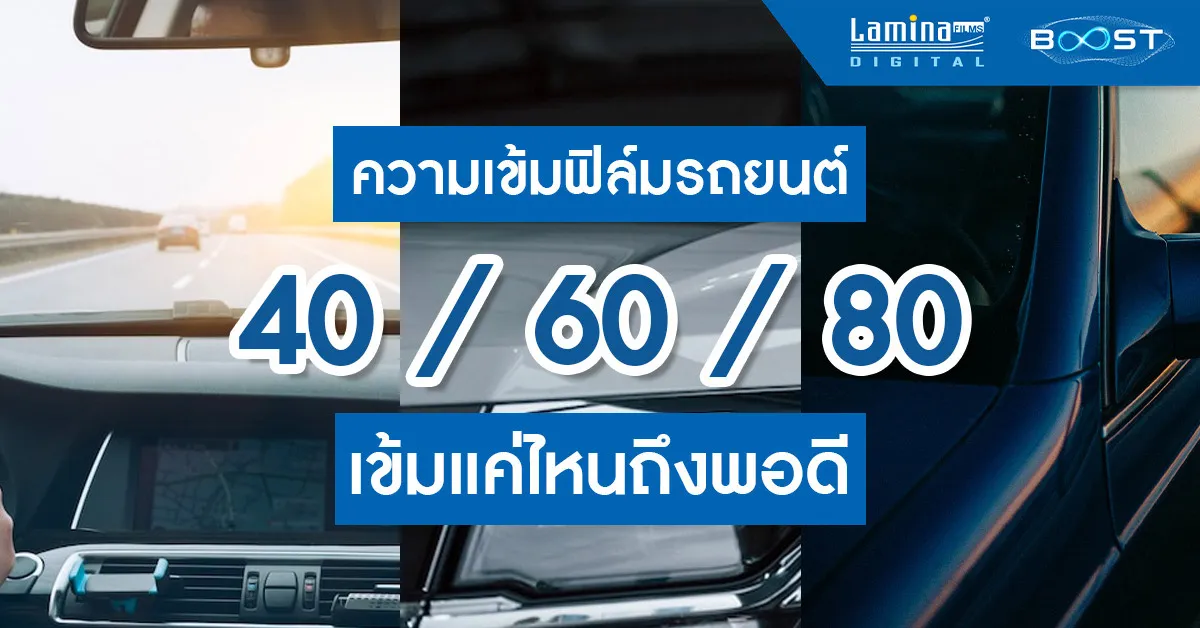
คุณคือคนหนึ่งที่กำลังตัดสินใจอยู่ใช่มั้ยว่า จะติดฟิล์มรถยนต์ให้รถคู่ใจที่ความเข้มกี่เปอร์เซ็นต์ดี? 40% 60% 80% วันนี้เราจะมาแชร์ข้อมูลที่ถูกต้อง เจาะลึกและครบถ้วน เกี่ยวกับเรื่องที่ผู้ใช้รถคนไทยคุ้นเคยเป็นอย่างดี นั่นคือเรื่อง “ฟิล์ม 40/60/80” พร้อมไขข้อข้องใจว่าฟิล์มติดรถยนต์ 40-60-80 หมายถึงอะไร? ต่างกันยังไง? บานหน้าติดฟิล์มรถยนต์ 40/60 ดีไหม แล้วการติดฟิล์มรถยนต์เซรามิค 60/80 ดีไหม? อ่านบทความนี้รับรองรู้เทคนิคเลือกความเข้มฟิล์มรถแบบรู้จริงชัวร์
| เลือกอ่านเฉพาะหัวข้อที่สนใจ กดที่นี่ได้เลยครับ |
ฟิล์มรถยนต์ 40 / 60 / 80 ตัวเลขนี้คืออะไร?
เพราะคนไทยส่วนใหญ่ ชินกันวิธีการเรียกความเข้มของฟิล์มกรองแสง ไปตามตัวเลขที่มากขึ้น ในลักษณะที่ว่า “ฟิล์มยิ่งเข้ม ตัวเลขแทนความเข้มยิ่งมีค่าสูง” เช่น ฟิล์ม 60 เข้มกว่าฟิล์ม 40 เป็นต้น หากเปรียบเทียบความเข้าใจ ฟิล์มใสสำหรับคนไทย ก็คงจะเป็นฟิล์มรถยนต์เบอร์ 0% และฟิล์มรถเบอร์เข้มที่สุดก็จะเป็นฟิล์ม 100% ครับ
แต่สาเหตุที่ตัวเลข 40 60 80 กำเนิดขึ้นมาในวงการฟิล์มกรองแสงเมืองไทยนั้น เกิดจากการที่ร้านฟิล์มในประเทศไทย นิยมเลือกนำเข้าฟิล์มกรองแสงเข้มๆ ที่มีค่ากันร้อนสูงมาจำหน่าย (เนื่องจากเมืองไทยเป็นเมืองร้อน) เพราะฉะนั้น เฉดความเข้มฟิล์มกรองแสง พิมพ์นิยม ในบ้านเราจึงตกอยู่ในตัวเลข 3 ค่านี้ด้วยกัน นั่นก็คือ
ฟิล์มรถยนต์ 40 = เข้มน้อย มองจากภายนอกยังเห็นห้องโดยสารภายในได้
ฟิล์มรถยนต์ 60 = เข้มปานกลาง ตอบโจทย์การใช้งานหลากหลายทั่วไป
ฟิล์มรถยนต์ 80 = เข้มมาก ฟิล์มมองจากภายนอกจะดูเข้ม เน้นความเป็นส่วนตัว
ซึ่งการเรียกชื่อฟิล์มรถ 40 60 80 แบบนี้ ก็ยังเป็นวิธีสื่อสารที่เซลล์ขายรถ หรือเจ้าของร้านฟิล์มยังนิยมใช้สื่อสารกับลูกค้ากันอยู่ ด้วยสาเหตุที่ว่า “เป็นประโยคที่ลูกค้าเข้าใจง่าย และรับรู้กันมาแต่ดั่งเดิม” ครับ…แต่ แต่ แต่ คุณเคยสงสัยมั้ย ?
| ฟิล์มกรองแสง มีความเข้มให้เลือกแค่ 3 ระดับจริง ๆ รึ? |
คำตอบคือ ไม่จริง! เพราะตามมาตรฐานสากลของโรงงานผู้ผลิตฟิล์มชั้นนำอันดับ 1 จากสหรัฐอเมริกา Eastman Performance Films LLC., USA แล้วการเลือกเฉดความเข้มของฟิล์มกรองแสงสามารถทำได้ละเอียดกว่านั้นมากๆ และค่าความเข้มของฟิล์มที่ว่านี้ อยู่ในสเปคสากลที่ชื่อว่าค่า Visible Light Transmittance (VLT) หรือ ค่าแสงส่องผ่าน นั่นเอง
ค่าแสงสว่างส่องผ่าน (Visible Light Transmittance : VLT) คืออะไร?
ค่า VLT คือ ค่าที่บอกถึงปริมาณของแสงสว่างที่สามารถส่องผ่านฟิล์มกรองแสงเข้ามาภายในรถได้ โดยแสดงในรูปแบบเปอร์เซ็นต์ ถ้าค่า % ยิ่งน้อย หมายถึง แสงผ่านเข้ามาได้น้อย ฟิล์มก็ยิ่งเข้ม และถ้าค่า % สูง หมายถึง แสงผ่านเข้ามาได้มาก ฟิล์มจะยิ่งใส จะเห็นได้ว่าการระบุสเปกของฟิล์มตามค่า %VLT จะทำได้ละเอียดกว่าการระบุความเข้มแบบ 40 / 60 / 80 มากๆ
ฟิล์มรถยนต์ 40 หมายถึงฟิล์มที่มีค่า VLT อยู่ในช่วง 34 - 80%
ฟิล์มรถยนต์ 60 หมายถึงฟิล์มที่มีค่า VLT อยู่ในช่วง 13 - 33%
ฟิล์มรถยนต์ 80 หมายถึงฟิล์มที่มีค่า VLT อยู่ในช่วง 0 - 12%
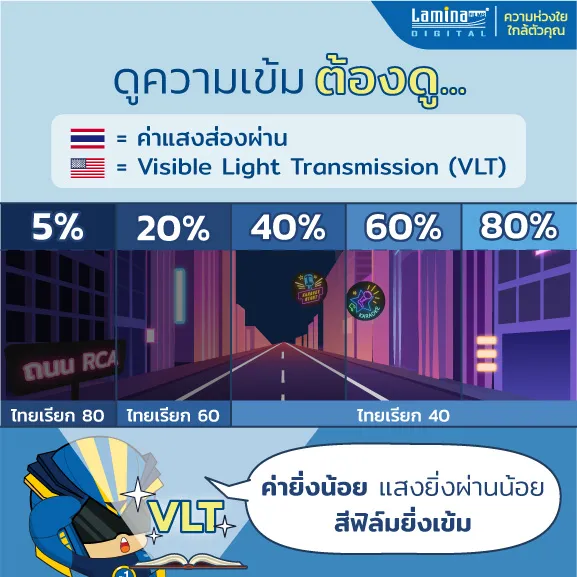
ภาพแสดงความสัมพันธ์ระหว่างค่าความเข้มฟิล์ม 40 / 60 / 80
แบบฉบับของคนไทย เทียบกับค่า VLT ตามมาตรฐานสากล
แบบฉบับของคนไทย เทียบกับค่า VLT ตามมาตรฐานสากล
อย่างไรก็ตาม ค่านี้ VLT ไม่ได้ส่งผลต่อประสิทธิภาพการลดความร้อนของฟิล์มจากแสงแดดแบบมีนัยยะสำคัญ อย่างที่หลายๆคนเคยเข้าใจแบบในอดีตนะครับว่า “ฟิล์มยิ่งเข้มยิ่งกันร้อนได้ดี” เพราะความสามารถการลดความร้อนของฟิล์มหลักๆเลย ต้องดูที่ค่า TSER (Total Solar Energy Rejection) เป็นสำคัญครับ เพราะด้วยเทคโนโลยีการผลิตฟิล์มที่ก้าวหน้าขึ้นมากในปัจจุบัน คุณจึงพบฟิล์มใส แต่กลับกันร้อนได้สูงกว่าฟิล์มเข้ม ก็มีให้เห็นกันมากมายในยุคนี้ เช่น ฟิล์มใสกันร้อนสูงของ Lamina Digital Special Series จะเห็นได้ชัดว่ากันร้อนได้ดีเยี่ยมไม่แพ้ฟิล์มเข้มเลย ฉะนั้นค่า %VLT จึงควรใช้เป็นแค่ข้อมูลประกอบการตัดสินใจเลือกติดฟิล์มตามไลฟสไตล์ความชอบส่วนตัวเท่านั้นพอครับ ว่าคุณชอบใช้รถสไตล์ไหน ฟิล์มเข้มได้เปรียบเรื่องให้ความเป็นส่วนตัวสูง และฟิล์มใส ก็โดดเด่นในเรื่องสามารถโชว์ห้องโดยสารที่สวยงามภายในรถคุณได้โดยยังกันความร้อนได้ดี ดังนั้นการเลือกฟิล์มแบบเซียนกูรูวันนี้ ต้องอย่าลืมดูค่า TSER ประกอบการตัดสินใจเป็นสำคัญด้วย ซึ่งคุณสามารถดูเพิ่มเติมได้จาก Infographic ลิงค์นี้ “เลือกฟิล์มกันร้อน ห้ามดูค่าเดียว”
ติดฟิล์มรถยนต์ 40/60 ดีไหม?
หลายคนอาจยังตัดสินใจไม่ได้ว่า เราควรจะเลือกติดฟิล์มรถยนต์ความเข้มเท่าไหร่ดี ขอบอกเลยว่าสูตรติดฟิล์มสุดฮิตของคนไทยที่นิยมสุด คือ ติดฟิล์มแบบ 40/60 ครับ (หมายถึงติดบานหน้า 40 รอบคัน 60) แล้ว
ข้อดีของการติดฟิล์ม 40
- ฟิล์ม 40 เหมาะกับทุกสภาพแสงและทุกสถานการณ์การขับขี่ของคนส่วนใหญ่ นิยมแนะนำให้ติดบานหน้า ซึ่งเป็นความเข้มที่สามารถมองเห็นได้ดีทั้งกลางวัน กลางคืน หรือแม้ในสภาพฝนตกหนัก โดยไม่ต้องเพ่งสายตามากเกินไป แต่ยังสามารถป้องกันความร้อนจากแสงแดดได้ดี
- ฟิล์ม 40 ของลามิน่ารุ่น L60Max Special ที่เป็นฟิล์มใส มีค่าแสงส่องผ่าน VLT 58% แต่ยังป้องกันความร้อนจากแสงแดด TSER ได้สูงถึง 58% ซึ่งถือว่าลดได้สูงมากสำหรับฟิล์มใส หรือถ้าเป็นฟิล์มเซรามิคแท้ตัวสุดฮิตลามิน่ารุ่น L40 Digital Ceramatrix ที่มีค่า VLT 43% ก็ยังลดความร้อนจากแสงแดด TSER ได้สูงถึง 53% ซึ่งไม่ธรรมดาเลยสำหรับใครที่สนใจติดฟิล์ม 40 บานหน้า
ข้อดีของการติดฟิล์ม 60
- ฟิล์ม 60 เป็นความเข้มมาตรฐานที่พอดีกับสภาพแสงทั่วไป ยังไม่มืดเกินไป ไม่ใสเกินไป ให้ความเป็นส่วนตัวพอสมควร ถ้ามองจากภายนอกต้องเพ่งถึงจะมองเห็นภายใน อีกทั้งยังสามารถป้องกันความร้อนจากแสงแดดได้ค่อนข้างสูง
- ฟิล์มลามิน่ารุ่น Digital CM Icon15 ที่มีค่าแสงส่องผ่าน VLT 15% แต่ป้องกันความร้อนจากแสงแดดได้สูงถึง 56% ซึ่งสูงมาก หรือแม้แต่ลามิน่ารุ่น Ceramic Iris15 ที่มีค่า VLT 14% ก็ยังลดความร้อนจากแสงแดดได้สูงถึง 51% ซึ่งทำได้น่าประทับใจมากทีเดียว ซึ่งเหมาะสำหรับติดรอบคันสุดๆ แต่ถ้าใครใจรักอยากติดบานหน้า 60 ก็ยังพอไหว ซึ่งลามิน่าแนะนำให้ติดเป็นฟิล์มเซรามิคแท้จะดีกว่า เช่นรุ่น L15 หรือ L30 Ceramatrix จะช่วยเรื่องทัศนวิสัยในการขับขี่ตอนกลางคืนที่แสงน้อย หรือตอนฝนตกหนักได้ดีกว่า
ข้อด้อยของการติดฟิล์มรถยนต์ 40/60
แม้ว่าการติดฟิล์มรถยนต์แบบ 40/60 จะเป็นสูตรติดฟิล์มสุดฮิต แต่บางคนก็มองว่าเป็นการติดที่เรียบๆธรรมดาเกินไป ใสไปไม่ส่วนตัว กลัวร้อน ไม่เท่ ไม่ซิ่ง อยากติดแบบ 60/80 หรือติดแบบไฮบริด (คือการติดฟิล์มแบบผสมผสาน เช่น บานหน้า 60 / บานคนขับ 40 / บานข้างคนขับ+บานหลัง 80 เป็นต้น) อยากจะบอกว่าไม่มีถูก ไม่มีผิด มันอยู่ที่สไตล์ความชอบของแต่ละคนมากกว่า ดังนั้นเลือกแบบที่ ใช่ ใช้แล้วตรงกับความชอบตัวเองดีที่สุดครับ
ติดฟิล์มรถยนต์ 40/60 ราคาประมาณเท่าไหร่
ปกติราคามาตรฐานของฟิล์มลามิน่าที่มีความเข้ม 40/60 ถ้าเป็นฟิล์มรุ่นฮิตที่ได้รับความนิยมสูงอย่าง ARL35C หรือ POP35BK บานหน้าราคามาตรฐานจะเริ่มต้นแค่ 3,000 บาทเท่านั้น ส่วนรอบคันรุ่นที่ติดกันเยอะอย่าง ARL20C หรือ ANL20N รอบคันก็เริ่มต้นแค่ 6,500 บาท แต่ถ้าเป็นฟิล์มรุ่นเซรามิคแท้อย่าง Ceramatrix หรือ Ceramic Iris ราคาก็จะสูงขึ้นอีกนิดหน่อย โดยเริ่มต้นบานหน้าที่ 4,500 บาท และรอบคันที่ 10,500 บาท ซึ่งยังถือว่าคุ้มค่ามาก เมื่อเทียบกับคุณภาพที่ได้ ถ้าใครกำลังค้นหาร้านใกล้บ้าน เพื่อสอบถามราคาโปรโมชั่น คลิกได้เลยที่ https://www.laminafilms.com/th/dealer
ติดฟิล์มรถยนต์ 60/80 ดีไหม?
นี่เป็นอีกคำถามที่ถามกันเยอะเลย ลามิน่าขอตอบว่า “ถ้าคุณเป็นคนที่มีสายตาปกติ...ติดได้ครับ” แต่ต้องระวังเรื่องกรณีที่เลือกติดบานหน้า เพราะการติดฟิล์มแบบ 60/80 ถึงแม้จะได้มาซึ่งความเป็นส่วนตัวที่มากขึ้น และได้ประสิทธิภาพการกันความร้อนจากแสงแดด TSER ที่สูงขึ้น รถดูเท่ขรึมขึ้น แต่ก็ต้องแลกมาด้วยทัศนวิสัยในการมองเห็น ที่ไม่เคลียร์ชัดเท่าฟิล์ม 40/60 ซึ่งถ้าคุณมีปัญหาเรื่องสายตา เช่น สายตาสั้น สายตายาว สายตาเอียง หรือสายตาที่เพ่งมองแล้วปวดตา รวมถึงผู้สูงอายุ เราไม่แนะนำให้ติดแบบ 60/80 ครับ แต่ถ้าคุณมีใจรักติดฟิล์มเข้มจริงจัง และสายตาไม่มีปัญหาใดๆ ก็ติดได้ ซึ่งลามิน่าขอแนะนำติดเป็นฟิล์มเซรามิคแท้ตัวจริงอย่าง Lamina Digital Ceramatrix Boost หรือ Lamina Digital Ceramic Onyx จะดีที่สุด เพราะตัวเนื้อฟิล์มแม้เข้มเมื่อดูจากภายนอก แต่เมื่อนั่งอยู่ภายในรถ จะรู้สึกสว่างเคลียร์ชัดขึ้นมาก และที่สำคัญกันร้อนสูงสุดๆ ก็ช่วยให้การขับขี่สบายขึ้นได้มากครับ
การติดฟิล์มรถยนต์เซรามิค 60/80 ราคาประมาณเท่าไหร่
ยุคนี้ใครๆก็ถามหาแต่ฟิล์มเซรามิค แต่ลามิน่าขอบอกว่า ถึงชื่อบอกเป็นฟิล์มเซรามิคเหมือนกันแต่คุณภาพไม่เหมือนกันนะครับ อย่างฟิล์มเซรามิคแท้ของลามิน่ารุ่น Lamina Digital Ceramatrix Boost มีราคามาตรฐานเริ่มต้นบานหน้าที่ 8,500 บาท รอบคันเริ่มที่ 19,500 บาท ถือเป็นฟิล์มเซรามิคที่ได้รับการยอมรับจากทั้งคนใช้รถ และคาร์คลับชั้นนำกว่า 40 คลับทั่วไทย โหวตให้เป็นฟิล์มเซรามิคอันดับ 1 ที่ใครติดก็ชมว่าคุ้มค่าคุ้มราคาจนแนะนำบอกต่อกัน แทบไม่ต้องโฆษณา
ความเข้มของฟิล์มรถยนต์ เกิดจากปัจจัยอะไรบ้าง
เราได้รู้แล้วว่าฟิล์มแต่ละรุ่นมีค่า %VLT ที่ต่างกันได้มากมาย แต่แล้วปัจจัยอะไรล่ะ ที่ทำให้ฟิล์มรถยนต์มีเฉดความทึบ หรือความเข้มต่างกันได้ยังไง? ไปดูกันต่อเลยดีกว่าครับ
VDO นี้ ลามิน่าพาคุณไปดูกรรมวิธีการย้อมสีฟิล์มกัน (นาทีที่ 23.32)
ปัจจัยที่ 1 : ขั้นตอนการฝังสี
ในขั้นตอนของการฝังสีนี้ จะเป็นการนำเฉดสีที่ต้องการ มาผนึกฝังอณูเม็ดสีเข้าสู่เนื้อฟิล์มด้วยขบวนการที่เรียกว่า Sputtering ซึ่งเฉดสีนี้เองจะส่งผลต่อความเข้มของฟิล์มรถยนต์โดยตรง ขอยกตัวอย่างขั้นตอนการย้อมสีจากโรงงาน Eastman Performance Films LLC.,USA (โรงงานผลิตฟิล์มชั้นนำระดับโลกจากอเมริกา ที่ Lamina Films นำเข้ามาจำหน่ายในเมืองไทย)
โดยโรงงานสามารถสร้างสรรค์สีของฟิล์มทั้งเข้มทั้งอ่อนได้มากกว่า 4,000 เฉดสีกันเลยทีเดียว
ปัจจัยที่ 2 : การผนึกวัสดุกันร้อน
นอกจากขั้นตอนการฝังสีเข้าไปในเนื้อฟิล์มกรองแสงแล้ว ขั้นตอนต่อไปจะเป็นการผนึกวัสดุกันร้อน ซึ่งสารที่นิยมใช้ในปัจจุบัน มี 2 แบบคือ
- ผนึกอณูโลหะ (เช่น ไทเทเนียม, ทอง, เงิน, อลูมิเนียม, ทองแดง ฯลฯ)
- ผนึกอณูอโลหะ (เช่น เซรามิค,ชาร์โคล,คาร์บอน)
โดยสารเหล่านี้ สามารถมีผลต่อสี ความเงา และความเข้มของฟิล์มได้ ยกตัวอย่าง สารอโลหะประเภท คาร์บอน (C) ที่มีสีดำธรรมชาติในตัวเอง เมื่อเคลือบฟิล์มแล้วจะส่งผลให้ฟิล์มมีสีเข้มโทนดำ หรือถ้าเป็นสารโลหะ ประเภทเงิน ก็จะทำให้เนื้อฟิล์มมีความเงา สีออกเคลียร์ใส ตัวอย่างเช่นฟิล์มลามิน่ารุ่น L60Max Special
ปัจจัยที่ 3 : สีเดิมของกระจกรถยนต์
เป็นสีเดิมของกระจกรถเป็นปัจจัยที่ไม่ได้เกิดจากฟิล์มโดยตรง แต่เป็นสีที่เพี้ยนไปจากการที่ติดฟิล์มซ้อนทับลงบนกระจกรถยนต์ที่มีสีดั้งเดิมอยู่แล้ว เช่น สีเดิมกระจกเป็นกระจกเขียวตัดแสง เป็นต้น ซึ่งสีกระจกของรถยนต์แต่ละแบรนด์ แต่ละรุ่นอาจมีสี ความเข้ม ความใส ความหนา และประเภทกระจกที่ไม่เหมือนกัน ทำให้เมื่อติดฟิล์มกรองแสงเข้าไปในรถรุ่นนั้นๆ ผลลัพธ์ที่ได้ก็อาจจะแตกต่างกันได้เช่นกัน
ยกตัวอย่างเช่น รถยนต์ที่เปิดตัวตั้งแต่ช่วงปี 90’ สีกระจกจะอมโทนสีชาเป็นทุนเดิม แต่รถรุ่นใหม่ๆ ตั้งแต่ปี ค.ศ. 2000 เป็นต้นมา สีกระจกก็พัฒนาเป็นสีอมสีเขียวเพื่อช่วยตัดแสงจ้า รวมถึงรถนำเข้าบางรุ่นอาจมีการติดตั้ง Privacy Glass มาแล้วจากโรงงาน ซึ่งเห็นได้ชัดจากรถไฟฟ้ารุ่นใหม่ๆ หรือกระจกบนหลังคาซันรูฟ ซึ่งมักเป็นกระจกที่มีความเข้ม ดูเหมือนมีฟิล์มติดมาแล้วระดับหนึ่ง
ตัวอย่างรถที่ติดตั้ง Privacy Glass ที่กระจกคู่หลัง
ที่มา: Steve Coulter Performance Cars
ที่มา: Steve Coulter Performance Cars
ปัจจัยที่ 4 : ขนาดของบานกระจกรถยนต์
อีกปัจจัยที่ส่งผลต่อความรู้สึกที่ผู้ใช้รถมองความเข้มของฟิล์มรถยนต์ คือจากขนาดและจำนวนของกระจกที่ติดตั้งบนตัวรถ ซึ่งมีผลกับความรู้สึกที่หลอกสายตาเรา กล่าวคือ…รถที่มีพื้นที่กระจกจำนวนมากและกว้าง จะมีช่องให้แสงส่องผ่านเข้าสู่ตัวรถได้มากกว่า ทำให้เรามองเห็นสีฟิล์มเข้มน้อยกว่ารถที่มีกระจกแคบและกระจกน้อยบาน ซึ่งจะทำให้รู้สึกว่าฟิล์มเข้มขึ้น ทั้งๆที่เป็นฟิล์มรุ่นเดียวกัน
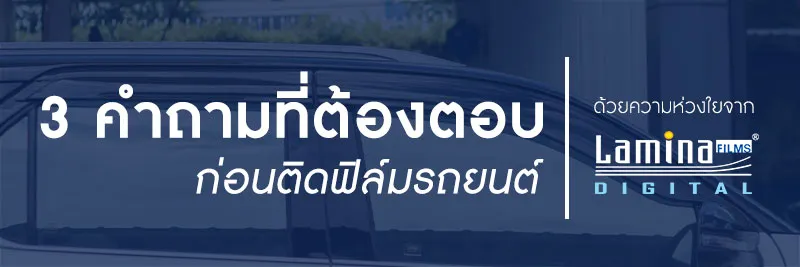
ตัวอย่าง ถ้าคุณติดฟิล์มรถยนต์เบอร์ 60% ให้รถสปอร์ต หรือซูเปอร์คาร์ (ซึ่งส่วนใหญ่กระจกรถจะมีจำนวนน้อย บานเล็กและแคบ ยกเว้นแต่มีเพียงกระจกบานหน้าและกระจกบานหลังจะใหญ่) ทำให้เมื่อดูจากภายนอกหลายคนอาจรู้สึกสีฟิล์มมีความเข้มขึ้นจนเหมือนติดฟิล์ม 80% ซึ่งจะต่างกับติดบนกระจกรถซีดานในตลาดทั่วไป
มาดูภาพ Ford Mustang GT350 ที่เป็นตัวแทนของรถสปอร์ต 2 ประตูที่มีจำนวนบานหน้าต่างน้อย และ Haval Jolion ที่เป็นตัวแทนของรถ SUV มาพร้อมกระจกรถกว้างหลายบาน ซึ่งทั้งสองคันนี้ติดฟิล์มรุ่นเดียวกัน ความเข้มเดียวกัน คีอ L15 Digital Ceramatrix ลองขยายและเลื่อนดูเลยครับ เทียบเห็นกันชัดเจนเลยใช่มั้ยครับ ว่าฟิล์มรุ่นเดียวกัน แต่ติดตั้งบนกระจกรถคนละไซส์ จำนวนกระจกต่างกัน ต่อให้เป็น รถสปอร์ต, รถเก๋ง, รถ SUV หรือรถกระบะ ก็ทำให้คุณเห็นสีฟิล์มต่างกันได้
รถสปอร์ต 2 ประตู
ติดฟิล์มกระจกบานหน้า L30 Digital Ceramatrix
และติดฟิล์มรอบคัน L15 Digital Ceramatrix
ติดฟิล์มกระจกบานหน้า L30 Digital Ceramatrix
และติดฟิล์มรอบคัน L15 Digital Ceramatrix
รถ SUV 4 ประตู พร้อมซันรูฟ
ติดฟิล์มกระจกบานหน้า L30 Digital Ceramatrix
และติดฟิล์มรอบคัน+ซันรูฟ L15 Digital Ceramatrix
ติดฟิล์มกระจกบานหน้า L30 Digital Ceramatrix
และติดฟิล์มรอบคัน+ซันรูฟ L15 Digital Ceramatrix
คำถามที่ต้องตอบ ก่อนเลือกติดฟิล์มรถยนต์

ส่วนใหญ่ขับรถในช่วงเวลาไหน?
ขับกลางวัน หรือกลางคืน … ช่วงไหนบ่อยกว่ากัน? ถ้าคุณเป็นคนที่มี Lifestyle ชีวิตประจำวันขับรถในช่วงกลางวันบ่อย และไม่มีปัญหาสายตา ก็สามารถติดฟิล์มรถยนต์สีเข้มได้ เช่น บานหน้า 60, รอบคัน 80 ก็ได้ แต่ถ้าต้องขับกลางคืนบ่อย และสายตาไม่ค่อยดี แนะนำติดบานหน้าสัก 40 (หรือค่า VLT ฟิล์มติดกระจกบานหน้าไม่ต่ำกว่า 30%) และรอบคัน 60 ก็กำลังดีครับ
ใช้กระจกมองหลังตอนถอยจอดหรือไม่
ถ้าคุณเป็นคนที่มองกระจกมองหลังตอนถอยรถเข้าซองจนติดเป็นนิสัย ความเข้มของฟิล์มที่ติดกระจกบานหลัง และกระจกข้างซ้ายขวาคนขับไม่ควรเข้มกว่า 60 แต่ถ้าคุณไม่ได้ใช้กระจกมองหลัง แต่ถนัดมองกล้องถอยหลังบนจอดิจิทัลในรถมากกว่า จะติดเข้มแค่ไหนก็ได้แล้วแต่ความชอบเลย
สายตาของท่านเป็นอย่างไร
หากคุณมีภาวะสายตาผิดปกติ ไม่ว่าจะเป็นสายตาสั้น สายตาเอียง สายตายาว หรือปัญหาสายตาอื่นๆ การติดฟิล์มกรองแสง เราอยากให้คุณใส่ใจเรื่องทัศนวิสัยมาก่อนเป็นอันดับแรก ลามิน่าแนะนำให้ติดฟิล์มกระจกบานหน้าที่ความเข้ม 40 ไว้ก่อน (ค่า VLT ฟิล์มติดกระจกบานหน้าไม่ต่ำกว่า 30%) นอกจากนี้ควรติดตั้งฟิล์มเงาน้อย (ค่า VLR ไม่เกิน 15%) เพื่อลดการสะท้อนแสงไฟเวลาขับกลางคืน เพราะความปลอดภัยสำคัญที่สุดครับ
| ขอแนะนำ Lamina Digital Mystery Boost ฟิล์มรถยนต์ที่ใช้เทคโนโลยี Digital Xtreamer ผสานนวัตกรรม DigitalBoost® ที่ออกแบบมาเพื่อเน้นการถนอมดวงตา ให้สบายตาขณะขับขี่โดยเฉพาะ |
สรุปความเข้มฟิล์มรถยนต์ 40/60/80
- สำหรับในเมืองไทยที่คนไทยส่วนใหญ่เรียกจนติดปาก ความเข้มฟิล์มรถยนต์ 40/60/80 เป็นการเรียกค่าความเข้มของฟิล์มที่ค่ายิ่งสูง หมายถึง ฟิล์มยิ่งเข้มมาก
- สำหรับในระบบสากลที่ทั่วโลกเข้าใจ จะกลับกันคือ เค้าจะดูค่า %VLT (Visible Light Transmittance) เป็นมาตรฐาน ค่ายิ่งสูง หมายถึง ฟิล์มยิ่งใส
- ทั้งนี้คุณควรเลือกความเข้มของฟิล์มรถยนต์ให้เหมาะกับการใช้งานของแต่ละคน นอกจากเพื่อการลดความร้อน ความสวยงาม ความเป็นส่วนตัว เรื่องทัศนวิสัยก็เป็นสิ่งสำคัญที่มีผลต่อความปลอดภัยในการขับขี่ของคุณและคนที่คุณรัก จึงต้องใส่ใจเป็นพิเศษครับ
ศึกษาให้ดีก่อนเลือกซื้อ เพราะฟิล์มกรองแสงรถยนต์ จะอยู่คู่กับรถที่คุณรักไปอีกนาน สำหรับใครที่ต้องการศึกษาเรื่องน่ารู้เกี่ยวกับฟิล์มกรองแสง สามารถตามไปอ่านบทความอื่น ๆ ของเราต่อได้เลย
| บทความน่ารู้ - อยากติดฟิล์มต้องเตรียมเงินเท่าไหร่ ราคาแต่ละรุ่นทำไมต่างกัน หากสงสัยต้องตามไปที่บทความ “ติดฟิล์มรถยนต์ ราคา?” - ทำความรู้จัก “ฟิล์มเซรามิค” และ “ฟิล์มปรอท” |
สำหรับฟิล์มรถยนต์จาก Lamina เรามีฟิล์มหลากหลายประเภทมากกว่า 100 รุ่น ทุกรุ่นเป็นสเปคจริงจากโรงงานผู้ผลิต Eastman Performance Films LLC., USA โดยตรง ได้รับการันตีมาตรฐานจาก AIMCAL / NFRC / ASTM / IWFA / AWFA / NAESCO / SKIN CANCER FOUNDATION / U.S. ENERGY STAR / ISO9001 & ISO14001 ถ้าอยากรู้ลามิน่ามีฟิล์มรุ่นไหนบ้างแนะนำ! ลองไปจำลองติดฟิล์มรถยนต์กันเลยครับที่นี่
เว็บไซต์นี้มีการจัดเก็บคุกกี้ เพื่อมอบประสบการณ์การการใช้งานเว็บไซต์ของคุณให้ดียิ่งขึ้น รวมถึงให้เราสามารถมอบข้อเสนอ กิจกรรมส่งเสริมการขาย เลือกเนื้อหาที่เหมาะสมกับคุณอย่างเป็นส่วนตัว
ท่านสามารถศึกษา นโยบายการเก็บและใช้คุกกี้ ได้ที่ลิ้งค์นี้ ใช้งานเว็บไซต์นี้เป็นการยอมรับช้อกำหนดและยินยอมให้เราจัดเก็บคุกกี้ตามนโยบายที่แจ้งในเบื้องต้น
ยอมรับ



